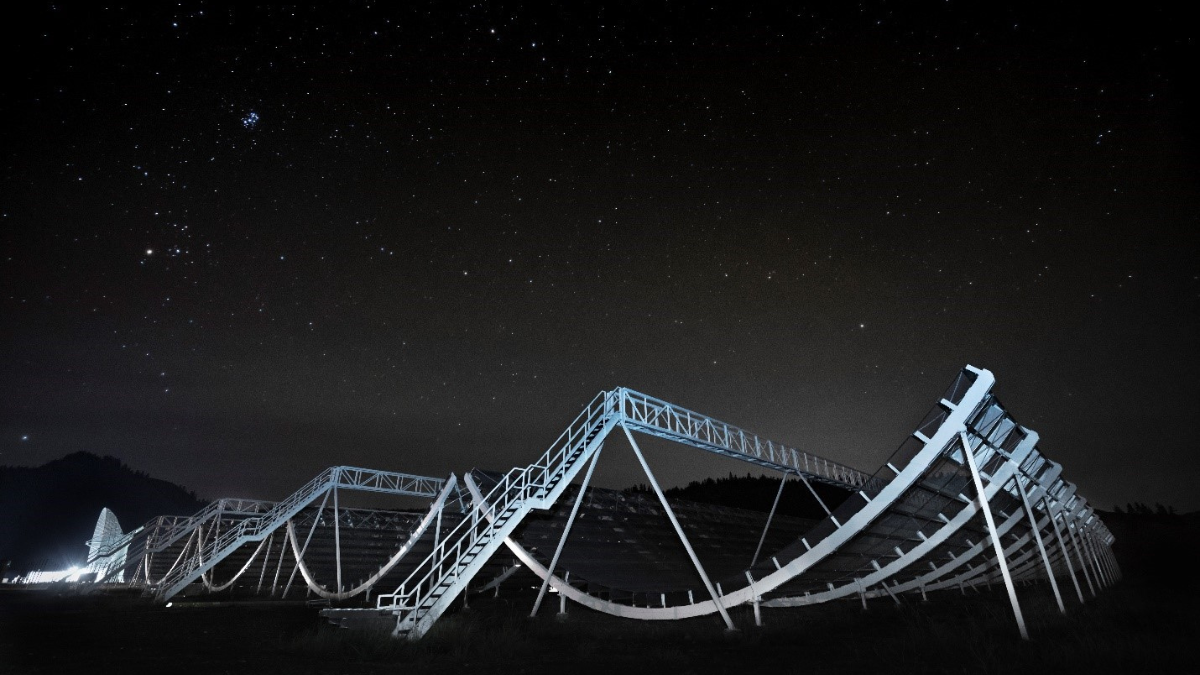Known Fast Radio Bursts (FRBs) now doubled thanks to CHIME Astronomers

A version of this article was shared via UBC Science, published on April 26, 2023.
The Canadian Hydrogen Intensity Mapping Experiment (CHIME)/FRB) collaboration, which includes UBC PHAS faculty member, Professor Ingrid Stairs and PHAS doctoral student Adam Dong, has doubled the number of known repeating Fast radio bursts (FRBs) with their latest study, published today in The Astrophysical Journal.
FRBs are one of the most enigmatic phenomena in the universe. These radio wave bursts are short-lived but incredibly energetic, and although astronomers do not know their exact origin, it is understood they come from beyond the Milky Way and may be created by the detritus of dying stars.
While astronomers have identified more than 500 FRBs to date, only 25 were observed to repeat until now. Additionally, due to differing time scales of FRBs, it was realized that some apparently one-off FRBs may not have been observed long enough for a second burst to be detected. The addition of 25 new repeating sources to the list brings the total number of known repeating FRBs to 50.
This latest research provides more data to study the properties and characteristics of repeating FRBs, which have different characteristics than the ones that don't repeat, leading scientists to believe that they may have different origins. The team has also highlighted 14 further sources, which they believe are potential repeating FRB candidates.
The CHIME radio telescope is located at the Dominion Radio Astrophysical Observatory in Penticton, British Columbia. It has the capacity to map the visible overhead sky every day, making it superior to other telescopes at finding FRBs, even when their location and timing are not known in advance.
The discovery of 25 new repeating FRBs by the CHIME/FRB collaboration is a significant milestone in our understanding of what FRBs are and the environments in which these explosive stellar deaths occur. By studying repeating FRB sources using other telescopes, we will eventually be able to pinpoint the galaxies of their origin.
About CHIME
CHIME is a radio telescope that collects radio signals from space. It is an impressive achievement in the field of astronomy and astrophysics, representing a collaboration between scientists, engineers, and programmers from several prestigious institutions including the University of British Columbia, The University of Toronto, McGill University, the National Radio Astronomy Observatory, the National Research Council of Canada and the Perimeter Institute.
This novel 1-hectare radio telescope has no moving parts and is built with four large reflectors that collect radio waves from inputs scanning a North-South overhead strip of sky. CHIME measures the location of hydrogen gas in the universe, fast radio bursts and radio pulsars, in frequencies from 400-800 MHz.
To accomplish these measurements, the team had to develop custom high-speed electronics capable of capturing the radio signals generated by the telescope, as well as a massive network of computers to sift through the enormous amount of data generated by CHIME.
In addition to its scientific significance, CHIME also represents an important opportunity for training the next generation of researchers in the field of cosmology and astrophysics. By involving students in the design and operation of the instrument, the CHIME team is helping to cultivate the skills and expertise necessary for future breakthroughs in this exciting field.
Read More
• CHIME website
• Background on CHIME from National Research Council Canada